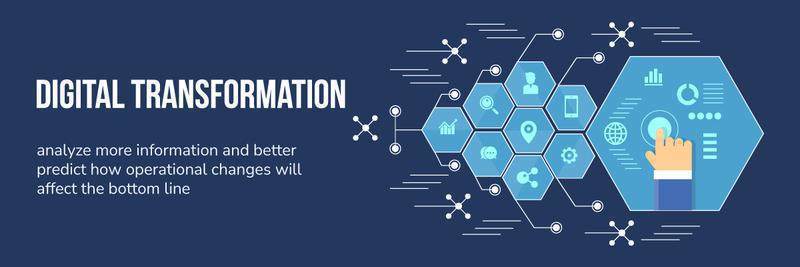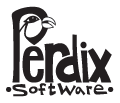
Automation and Computerization and Digitalization, Oh My!
Breaking down these buzzwords and busting the myths of digitalization
Digitalization. Oh no. The future is upon us.
Technology, like digitalization, has changed our world for good, but has it been changed for the better? People love to debate it, but at Perdix we, unsurprisingly, think yes, and if you’re up to date on the Industry 4.0 revolution we’re sure you’ll agree.
Well, what even is digitalization?
Di-gi-ta-li-za-tion. Awkward, isn’t it?
But we better get used to it because digitalization, not to be confused with digitization (no al), is the future of business – any business. Digitalization affects us al (see what we did there?) It is a new method of doing things, a more efficient, informed method. It will disrupt industries and forever change the way business decisions are made. It’s the latest band wagon and it’s here to stay, so hop on.
We hear the word digitalization all the time but it’s usually used interchangeably with automation or computerization so what’s the difference? We’ll break it down:
|
Word |
Definition |
|
Automation |
n. automatically controlled operation of an apparatus, process, or system by mechanical or electronic devices that take the place of human labor. |
|
Digitization |
n. the conversion of text, pictures, or sound into a digital form that can be processed by a computer. |
|
Computerization |
n. the process of starting to use a computer to do something that was done by people or other machines before. |
|
Digitalization |
n. the use of digital technologies to change a business model and provide new revenue and value-producing opportunities; it is the process of moving to a digital business. |
|
Bonus: Digital Technology |
n. electronic tools, systems, devices and resources that generate, store or process data. |
Sources: Mirriam-Webster, Oxford Language, Cambridge Dictionary, Gartner, Victoria State Government
Let’s sum it up
You can, in fact, automate without digitizing and computerizing, like the Evans flour mill here in Rochester or the automaton in Hugo. Today, though, most automation is done with computers, making it both automation and computerization – computerized automation if you will.
Technically, you could digitize without computerizing, though we don’t know why you’d want to. You do, however, need to digitize to computerize, since digitization is just getting data and information into a format that computers can process.
Computerization, then, is similar to automation, but it uses computers (shocker). Computerization is essentially modern automation and oftentimes replaces non-computerized automation.
Finally, we have digitalization. Digitalization takes all of these building blocks and combines them to harness the full potential of computerization and digital technologies.
Digitalization further leverages digital technology to help you make data-backed business decisions. This technology allows you to gather, link, and analyze large amounts of precisely-collected data which enables these informed decisions.
What do you mean?
We can all think of decisions we’ve had to make without as much information as we would have liked, introducing more risk and uncertainty into the situation at hand.
Digitalization has the power to change this. Of course, no business will ever be 100% risk-free but, today, we can eliminate a lot of unnecessary risks.
Digital technologies make it a lot easier to monitor relevant indicators and collect data. That data can then be analyzed to find trends and gain meaningful insight as to how each aspect of an operation impacts the others, as well as to predict the impacts of future changes.
This is what everyone is talking about when they throw around the term “data driven decision making”. Technology allows us all to analyze a lot more information and better predict how operational changes will affect the bottom line.
In manufacturing, digitalization not only allows you to get rid of error-prone physical paperwork throughout your facility, but also export and analyze data that was once trapped – trapped on paperwork or trapped in software that couldn’t communicate with any of your other software, rendering it useless. When you can actually access your data, you can use it to find and correct inefficiencies in your operation.
For example, you can find out what costs more – a long wait time or a high error rate – and then focus your efforts on implementing changes that will have the biggest impact. Digitalization’s main benefit is that it allows us to take full advantage of information that may not have been available to us in the pre-digitalization era.
So, this is the job stealer everyone has been talking about?
Eh, not really. Studies have shown that, on average, advances in technology actually create more occupations than they eliminate, so why should digitalization be any different?
What will be different is the nature of the work we humans do, because we won’t have to do repetitive, non-cognitive, robot-y jobs like inputting data from physical spreadsheets into the computer. We’ll do creative, complex jobs that require uniquely human intellect, dexterity and sensory skills.
We see this first hand while consulting on digitalization projects. Sometimes entire departments are renamed and job duties change to move employees from doing tasks that computers are now capable of completing, to doing tasks that support and supplement the new technology and the business as a whole.
Oftentimes, though, digitalization is just employees doing what they’re already doing but on a computer, instead of paper, and better.
By “better” we mean in a way that makes sense for the medium. Computers are capable of doing a lot more than paper, so we shouldn’t just use them as virtual paper but rather as information processing machines that can augment and support our own personal information processing capabilities. Once you start working like this, you process information faster and can move on to processing other information – making the whole operation faster.
This will be a bit of a disruption to the industry norms we’ve grown accustomed to but it will add value and keep manufacturing efficient and, therefore, competitive in a world that increasingly looks for inexpensive consumer goods.
I’m sure we can all see the benefit in that, but let’s be real – your favorite benefit is probably not having to read that one coworker’s hand-writing anymore, and if you can’t think of that co-worker, it’s you. It’s okay though, the world is going digital now so you can just type!
In all honesty though, the process of digitalization isn’t fast enough to be the big job stealer everyone makes it out to be. Maybe someday but not today. Digitalization is a very gradual process, not free from the friction of any other major operational change.
Getting all of your data from paper to computers – the digitization step of digitalization – takes time, and successful digitalization projects require strategy.
How are we supposed to make this transition?
Digitalizing all those records? Possible restructuring of departments? Sounds like a lot, we know. No need to worry though, there are lots of companies that offer consulting services to guide businesses through their digital transition.
When evaluating these companies and choosing your consultant, there are some important things to look for, such as:
Customization from start to finish -
You want a company that will come in and evaluate your operation to see how digitalization can best benefit your operation so that right from the start your strategy is tailored to your needs.
In addition to customizing your software and features, a big part of this step is determining the best hardware setup for you and your employees / coworkers to interface with your digitalization technology. This will change depending on the size, scope, and layout of your operation.
Information fluency -
When selecting a new system and getting it set up, make sure that it can integrate your existing systems. As we said earlier, paper isn’t the only place information gets trapped, it’s just as annoying when you have all of the information on your computer but the different software, etc. don’t communicate with each other, creating a lot more friction in your tracking and analysis of data.
Personalized training -
Finally, it is important that your consultant takes the time to stick around and train you and your employees after setting everything up. There’s nothing worse than paying a lot of money for a new system and not being able to use its full functionality so make sure you understand how to use each feature to get the most out of your digitalization efforts.
As intimidating as digitalization and Industry 4.0 may sound, soon it will be a normal part of day-to-day operations. These are valuable tools to supplement your information processing capabilities and keep your processes lean. Regardless of the size of your company, organization, or operation, you can find a great digitalization system for you when you ask the right questions and find the right consultant.
For more information visit MeetMOLI.com

Catherine McConnell
Marketing InternFormer marketing intern at Perdix Software, Catherine McConnell is a SUNY Brockport Graduate with a BS in Dance and Finance. Her previous work experience includes Market Research Consulting through Entrepreneurs EDGE, and a marketing internship at ImpromptMe, Ltd. Currently, Catherine is employed as Project Coordinator at Transperfect.
With her dual passions for creativity and analysis, Catherine has found marketing to be the perfect combination of the two. Having grown up dancing, Catherine was able to learn communication, artistic skills, and self-promotion from a young age and is pleased to be able to put those skills to use promoting small businesses and economic development. In her free time, Catherine enjoys dancing, cooking, and listening to podcasts.
